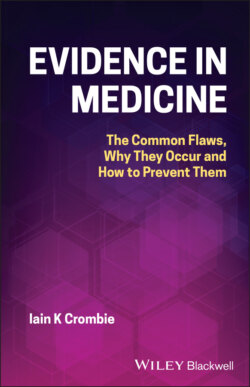Читать книгу Evidence in Medicine - Iain K. Crombie - Страница 9
TESTING ON A SERIES OF PATIENTS
ОглавлениеThe transition, from treatments based on theory to the use of evidence derived from empirical studies, was a gradual process. A simple, and common, method was to give a treatment on a series of patients, then observe its impact on disease. A good example is the use of the leaves of the willow tree for inflamed joints, a treatment dating back to the ancient Egyptians [13]. Clinical observation confirmed the benefits: application of a decoction of willow leaves to inflamed skin reduced the swelling. Extracts of willow leaves and bark were also used for fever and pain by the Greeks from the fifth century BCE [14]. An important step in the use of the willow was taken by the Reverend Edward Stone in 1763. He administered a solution of powdered willow bark to 50 patients with fever, judging the treatment a great success [14, 15]. The active ingredient of the willow, salicin, was isolated in the 1820s [13, 15]. This drug was tested by a Dundee physician, T.J. MacLagan, who administered it to a series of patients with acute rheumatism. Not only was the treatment successful, it demonstrated antipyretic, analgesic and anti‐inflammatory effects [15]. Salicin was recognised to be an important drug, but its long‐term use was limited because gastric irritation, nausea and vomiting were common side effects. The pharmaceutical arm of the Bayer company searched for a safer alternative, and successfully modified salicin to produce a new chemical with fewer side effects [13, 15]. That drug, aspirin, is now the most widely used medicine in the world [14].
Another example of evidence from a series of patients is the discovery of insulin for the treatment of diabetes. This was undoubtedly ‘one of the most dramatic events in the history of the treatment of disease’ [16]. Research, in the late nineteenth century, had shown that removal of an animal's pancreas ‘produced severe and fatal diabetes’ [17]. Over the following 30 years many researchers tried to isolate a pancreatic extract that could control blood sugar levels. They had little success, as the extracts had only a transitory effect on blood sugar and caused unacceptable side effects (vomiting, fever and convulsions) [18, 19]. In October 1920 Frederick Banting, a young Canadian doctor, was preparing a lecture on the pancreas [16]. The research he was reading led him to think that the active ingredient was being destroyed by the digestive enzymes in the pancreas, and that this could be prevented by ligating the pancreatic ducts. Banting began the experiments with extracts of the ligated pancreas in May 1921 [17]. By January 1922 a purified extract had been obtained. This proved successful in treating a 14‐year‐old boy, and in February a further six patients were treated with equally favourable results [16]. The discovery was announced in April to international acclaim; the Nobel prize was awarded to Banting, and one of his colleagues, Dr Macleod, in 1923 [16].
